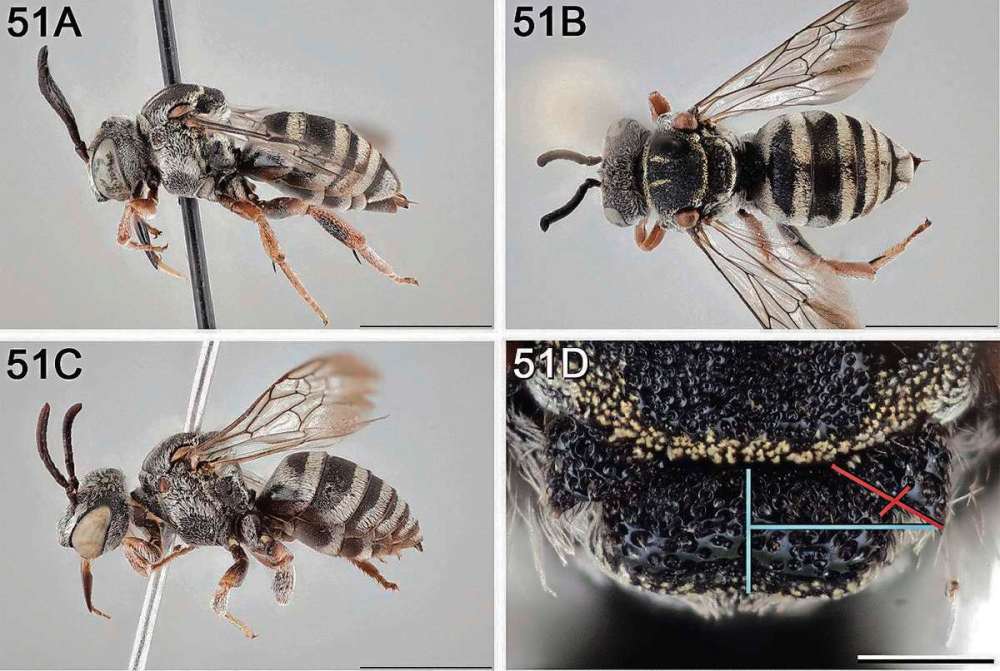Little bee represents big things about eco-diversity
Entomologist finds new species of cuckoo bee in Spirit Sands
Advertisement
Hey there, time traveller!
This article was published 01/06/2018 (2745 days ago), so information in it may no longer be current.
A tiny discovery in Manitoba’s Spirit Sands is emphasizing the immense biodiversity of the province.
Jason Gibbs, an assistant professor of entomology at the University of Manitoba, recently learned a bee collected during a hike with his partner through Spruce Woods Provincial Park is a new species of cuckoo bee bearing his name.
The Epeolus gibbsi was collected in July 2017 when Gibbs and Yuko Nozoe, his wife, were out for a walk in the desert-like area, mixing research with pleasure.

Of the dozens of specimens the pair collected that day, one stood out from among the rest.
Gibbs, a taxonomist and the curator of the largest museum of entomology in western Canada, has described a handful of species in the past, including a new species of bee he discovered in Toronto.
He said he couldn’t make sense of the black insect, about the size of a housefly, with a slender waist, and two white dots and a band of white, dense hair, on its back.
“It wasn’t something that I was looking for per se,” Gibbs said. “One of the things that I’m interested in doing while I’m here is getting a better sense of the bee diversity in Manitoba. Part of that is going to areas that are ecologically interesting because you’ll get different species in different habitats.”
Gibbs sent the specimen to a colleague at York University and on May 8 read about the new bee in an article by Thomas M. Onuferko titled A revision of the cleptoparasitic bee genus Epeolus Latreille for Nearctic species, north of Mexico.
Gibbs said not much is known about the bee at this time, including how many may live in Manitoba, what habitats they thrive in, and what their role is in the local ecosystem. However, he says the bee is parasitic and will lay its eggs in other bees’ nests, particularly cellophane bees, a type of solitary ground nesting bee which is considered to be a pollinator. The chance of the bee being invasive is very unlikely, Gibbs added.
Gibbs said his is the only specimen known in Canada — though there are two specimens in poor condition that were collected 100 years ago in Wisconsin —and the discovery opens up a new avenue of research.

“We can’t even begin to ask the question of whether this should be something to be concerned about until we know more about the species,” Gibbs said.
“One of the things that I think is interesting about discoveries like this bee, is that it highlights all the diversity right under our noses, and that we’re still finding all these things. There’s a lot to learn and a lot to discover,” Gibbs said. “I think it highlights the importance of locations like Spruce Woods, this ecologically interesting habitat that’s important for a lot of plants and animals.”
Gibbs plans to head back to Spruce Woods Provincial Park this summer to see what more he can learn about his new bee and continue collecting specimens in the region.
“I think we need more people out just surveying and collecting and trying to understand what we have,” Gibbs said. “It’s the only way we can really sort of understand how things change.”




